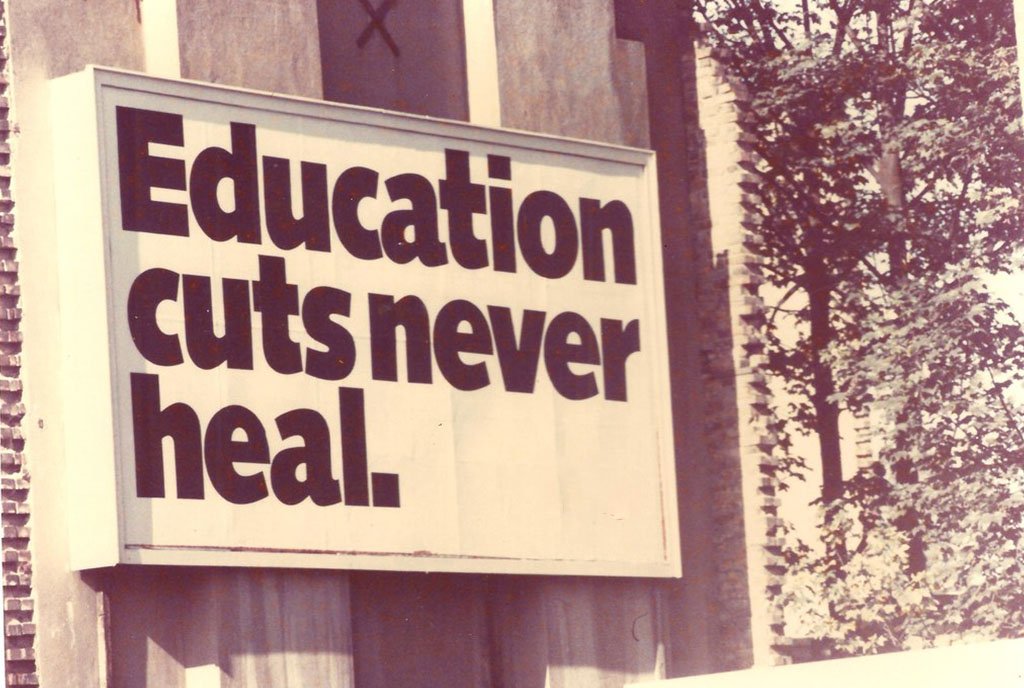
It seems long ago, but in early 2021, after the passage of the American Recovery Plan Act, President Joe Biden was widely being heralded as a transformational president. This moniker always said less about Biden the individual than it did about the zeitgeist of a country shaken by the COVID-19 pandemic. A new social contract—that is, a structural change in the relationship of the public to the government, the 1930s New Deal being the quintessential US example—seemed to just maybe be at hand.
Two years later, that prognosis appears more doubtful, even if the structural failings of the current system that prioritizes private ownership and private provision of services—which often goes by the name of neoliberalism—are as profound as ever.
The struggle for a more progressive social contract continues. Even if federal legislation has been stymied, state and local efforts have gained ground.
Yes, pared-down infrastructure and climate legislation did pass in the last Congress. But many pieces of major legislation failed. Child tax credit? Gone after one year—even though the temporary ARPA child tax credit had lifted an estimated 2.9 million children out of poverty. (Those gains are already wiped away). Paid family leave? Universal pre-K? Free community college? New federal support for affordable housing? Each of those measures were proposed by Biden in 2021 as part of “Build Back Better.” None made it into law.
Yet the struggle for a more progressive social contract continues. Even if federal legislation has been stymied, state and local efforts have gained ground in many places. And nowhere is this clearer than in Minnesota, which in the spring of 2023 passed its most far-reaching set of economic justice legislation in generations.
A Small Midterm Election Shift Makes a Big Difference
Minnesota has historically leaned in favor of the Democrats. But the lean has often been slight. For two decades, between 1991 and 2011, Democrats were locked out of the governorship. The state House of Representatives has been controlled by Republicans as recently as 2018 and even now Democrats have a narrow six-seat (70–64) majority. Democrats only gained control of the Senate after the November 2022 elections, winning an even narrower 34–33 majority. The “landslide” margin by which that critical 34th seat was won? Exactly 321 votes.
Nationally, the Democrats “won” the 2022 midterm contest by losing the election by a lot less than expected. In the US House of Representatives, Republicans gained nine seats—enough to win a majority of that half of Congress (Democrats did gain one Senate seat). But in places like Michigan and Minnesota, the Democrats actually won the old-fashioned way—by winning governing majorities.
After the election, in Minnesota many anticipated that even with Democrats achieving a so-called “trifecta”—that is, control of the governorship and both houses of the state legislature—the narrow margins would limit legislative achievements, much as they had at the national level in 2021–2022. Democrat Heather Gustafson, who narrowly won her state senate race, ousting a Republican incumbent, expressed this conventional view: “We want to be very cautious and thoughtful with how we go forward,” she told a Minn Post reporter. By early 2023, however, Governor Tim Walz was declaring, “Now is the time to go bold” and pledged to “lead the nation in ending child poverty.”
Build Back Better, Minnesota Style?
This spring in Minnesota marked a flurry of legislative activity. Legislation passed in the recently completed 2023 session include laws that codified abortion rights, increased transgender rights protections, made available drivers licenses for undocumented residents, and restored voting rights for people who are released from prison or jail. The state legislature also passed measures that advanced gun control, legalized recreational marijuana, and called for a carbon-free electric grid by 2040.
Perhaps most notable, however, were the surprising number of items passed which directly concerned building social and economic rights. This is notable precisely because this is where nationally movement has been most obviously lacking. Among the most significant legislative actions Minnesota approved this spring are the following:
- Approved a new system of 12 weeks of paid family and medical leave, funded by a 0.7 percent payroll tax on employers
- Guaranteed a minimum of six sick days a year for full-time employees
- Banned the use of “noncompete” clauses in employment contracts
- Established a system akin to sectoral (industry-wide) bargaining in nursing care
- Enacted new protections for meat packing, construction, and warehouse workers
- Expanded union rights by banning “captive audience” meetings that attempt to discourage employees from unionizing,and compelling school districts to bargain with teachers’ unions over class sizes
- Implemented a state child tax credit that is expected to reduce Minnesota’s childhood poverty rate by as much as one-third
- Passed a law making public school meals free for all students
- Approved a $1 billion dollar allocation for affordable housing
One might almost call the package Build Back Better, Minnesota Style.
Of course, some caveats must be acknowledged. The paid family and medical leave system does not take effect until 2026. The child tax credit is phased out at rather modest income levels: a single parent with two children who earns $62,000 a year or higher a year would get nothing. Such a structure reduces the cost of the credit, but, since statewide median household income is $77,000, this means most families have no personal stake in maintaining the benefit, which may well make it more difficult to sustain politically. It is also the case that the above list would have included a law to establish minimum wages for ride-hailing service drivers, but for the fact that faced with threats by Lyft and Uber to withdraw service, Governor Walz vetoed the legislation, the first bill he vetoed since assuming the governorship in 2019.
It is also worth noting that one important contributor to legislative success in Minnesota was money. Specifically, in part due to federal ARPA payments to the state government, Minnesota had a $17.6 billion budget surplus. This not only help make many new expenditures possible, but surely served as a “lubricant” that helped seal deals in the legislature to get so much legislation approved despite slim majorities. It is, of course, possible, that should state finances change in Minnesota, some of the gains, especially those that are costly, might get scaled back.
Sign up for our free newsletters
Subscribe to NPQ's newsletters to have our top stories delivered directly to your inbox.
By signing up, you agree to our privacy policy and terms of use, and to receive messages from NPQ and our partners.
Breaking New Ground
Some of the measures passed are common in many states. Minnesota is hardly the first state to increase spending on housing. It is the twelfth state to offer some variant of paid family leave. It is the seventeenth state to offer some variant of guaranteed paid sick leave. State child tax credits exist in one form or another in 11 states.
Having common standards helps workers because it helps enforce industry rules across the board . . . avoiding common “race to the bottom” dynamics.
Other measures, however, are more groundbreaking. Limits on the use of noncompete agreements (that is, the use of employment contracts that keep people from changing jobs to work for a competing employer, a provision that reduces the leverage that workers have to increase their compensation) exist in 12 other states and the District of Columbia, but JD Supra reports that Minnesota’s new law places it among a narrower group of the now four states—the other three being California, Oklahoma, and North Dakota—that broadly ban the practice. And Minnesota is also only the third state in the nation to guarantee free meals to all public school students (California and Maine are the other two).
A few measures, particularly in labor law, mark even greater shifts. One is the establishment of sectoral bargaining in the nursing care industry, allowing a form of collective bargaining across the entire sector, not just within a single workplace or employer. This policy comes in part in response to a history of Minnesota nursing care facilities’ dismal record of protecting patient health during the COVID-19 pandemic. As Bryce Covert writes in Fast Company, sectoral bargaining as such is prohibited by federal labor law (which favors firm-based bargaining). However, it is legally permissible to create an industry “standards board.” Having common standards helps workers because it helps enforce industry rules across the board—thereby avoiding common “race to the bottom” dynamics that disfavor high-road employers and favor employers that cut corners.
Minnesota is not the first state to do this—California has a standards board for fast food workers, for instance. A handful of cities have also implemented variants of this concept for homecare workers due to a campaign led by the National Domestic Workers Alliance. But Minnesota is only the second state, after Michigan, to implement sectoral bargaining for nursing homes.
What is notable about all these actions is that they increase worker power.
A second critical change is banning what are known as “captive audience” meetings. These are meetings where, on company time, workers are obliged to attend corporate “information sessions” that seek to dissuade employees from voting to join a union. Such sessions, which often contain thinly disguised threats of closing facilities if the union is voted in, have proven to reduce union election win rates by at least 26 percent. The Protecting the Right to Organize or “PRO” Act would ban such tactics across the country, but it has been blocked by the US Senate. Now, Minnesota is only the third state in the nation to ban the practice (the other two being Oregon and Connecticut).
The regulatory changes for construction, warehouse, and meat packing workers are also significant. The construction section of the new labor law passed in Minnesota makes general contractors liable for wage theft by subcontractors (a practice that is used in California, New York, and Virginia, among other states) to create an enforcement mechanism to contain what has been widespread underpayment of workers.
The warehouse section, which is clearly aimed at Amazon (it only applies to firms of over 250 employees with warehouse distribution centers), requires firms to share with workers the productivity data that company managers keep on their employees. The meatpacking section creates worker training provisions and creates a meatpacking industry worker rights coordinator position with the state labor department. During the pandemic, meat processing facilities famously were “hot spots” with high COVID case counts because of poor health and safety conditions.
What is notable about all these actions is that they increase worker power—by facilitating workers’ ability to organize, increasing social support, and increasing worker rights on the job. It is well-known that passage of social legislation highly correlates with worker power. Thus, to the extent these measures increase worker power in Minnesota, it is at least conceivable that they will reinforce an ongoing political shift in the direction of more social benefit policies.
Will State Victories Lead to National Change?
Will the laws that have been passed in Minnesota stay in Minnesota? One major difference in Minnesota compared to the federal government is the lack of a strong filibuster rule in the state. Most states have much more limited (or sometimes nonexistent) filibuster rules. So, yes, state governments can be more malleable to public will—whether in a progressive or a conservative direction—than the federal government. It is also the case that policy change often starts at the state and local level. For instance, state-based old-age pension policies, although modest, set the stage for what became the Social Security system.
Whether the gains made this year in Minnesota prove to be an anomaly or an indicator of future national direction remains to be seen—and the outcome will likely ultimately depend on the success of social movements to organize and secure these gains, as it has in Minnesota. Indeed, in a keynote address this month at a Washington, DC conference, Lieutenant Governor of Minnesota Peggy Flanagan noted that in that state, “We have been organizing towards these wins for years and years and years.”
The media, of course, has focused on legislation that has rolled back rights in conservative states. But there is a powerful progressive story to tell in some states as well. Given the history of social change, these movement threads are well worth following.












